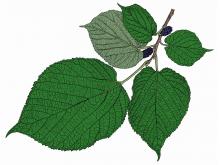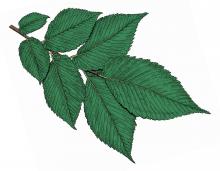Trees, Shrubs and Woody Vines
Media

Species Types
Scientific Name
Morus rubra
Description
Red mulberry is native to Missouri and North America. You can distinguish it from the introduced white mulberry tree, which is a noxious weed, by its leaves and fruits.
Media

Species Types
Scientific Name
Platanus occidentalis
Description
The white, smooth-looking limbs of sycamore rise over countless streams and river banks, as well as over sidewalks and city streets. The leaves, which somewhat resemble those of maples, can reach remarkably large sizes.
Media

Species Types
Scientific Name
Acer rubrum
Description
Red maple is one of our most useful — and beautiful — native trees. You can find it in the woods as well as in landscape plantings statewide. Many horticultural varieties are available at nurseries.
Media

Species Types
Scientific Name
Acer saccharinum
Description
In nature, silver maple is a bottomland tree. Silver maples pay for their rapid growth by having rather brittle branches that easily break off in windy and other inclement weather.
Media

Species Types
Scientific Name
Populus deltoides
Description
Named for the cottony fluffs of hairs attached to its tiny seeds, cottonwood thrives in moist lowlands near streams and rivers. It is Missouri’s fastest-growing native tree but pays for that distinction by being relatively short-lived.
Media

Species Types
Scientific Name
Acer negundo
Description
A member of the maple family, box elder is often confused with poison ivy because its compound leaves sometimes grow in threes (though also in fives). A fast-growing tree, its winged seeds betray its relationship to other maples.
Media

Species Types
Scientific Name
Celtis occidentalis
Description
Common hackberry is named for its sweet, purple, edible fruits, but most people identify hackberry with its weird-looking bark, which develops numerous corky, wartlike projections and ridges.
Media

Species Types
Scientific Name
Ulmus americana
Description
Until Dutch elm disease came to America, the large, graceful American elm was widely planted along city streets and was beloved as the all-American shade tree. Now large specimens are rare, since the deadly fungus usually kills trees before they reach fine old ages.
Media

Species Types
Scientific Name
Ulmus rubra
Description
Found nearly statewide, slippery elm has fuzzy twigs and reddish hairy buds, which often attract attention in wintertime. Its inner bark is reddish and rather slimy, which gives this tree its name "slippery."
Media

Species Types
Scientific Name
Salix spp. (about 12 species in Missouri)
Description
Exotic willows are available at lawn and garden centers, but there are several willow species that are native to Missouri. Most are rather humble colonizers of gravel bars, riverbanks, and lakesides. Many are important for human economic interests. All have a place in our wild ecosystems.
See Also
About Trees, Shrubs and Woody Vines in Missouri
There are no sharp dividing lines between trees, shrubs, and woody vines, or even between woody and nonwoody plants. “Wood” is a type of tissue made of cellulose and lignin that many plants develop as they mature — whether they are “woody” or not. Trees are woody plants over 13 feet tall with a single trunk. Shrubs are less than 13 feet tall, with multiple stems. Vines require support or else sprawl over the ground.





















